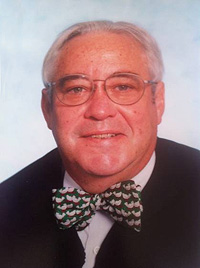 When I penned the scenario for an Edna McConnell Clark funded gathering of Judges, State Agency Executives and members of the Conference of State Legislatures, I tried to capture the whirlwind of change that had come about since the 1980s. I went on the bench in 1975 and was exposed to Judge John Steketee and Peter Forsythe’s work on judicial review of children in placement and the resistance of the judiciary and agency to take on that oversight role which was, at first, poorly defined.
When I penned the scenario for an Edna McConnell Clark funded gathering of Judges, State Agency Executives and members of the Conference of State Legislatures, I tried to capture the whirlwind of change that had come about since the 1980s. I went on the bench in 1975 and was exposed to Judge John Steketee and Peter Forsythe’s work on judicial review of children in placement and the resistance of the judiciary and agency to take on that oversight role which was, at first, poorly defined.
With the Adoption Assistance and Child Welfare Act of 1980 it became federal policy and trickled down to the states. Because of Peter Forsythe and Edna McConnell Clark funding, the National Council of Juvenile and Family Court Judges (NCJFCJ) Permanency Committee came to the table at a time when there was conflict between courts and agencies about the meaning and extent of authority over case plans and what were “reasonable efforts” expectations of best practice at each stage of the state’s intervention.
Publications such as Making Reasonable Efforts and a Reasonable Efforts Checklist helped overcome some resistance to change but a lot of court/agency mutual bashing existed. Questions like: “What are the limits of judicial authority?” (if any); “Who owns the case plan?” and objections to judicial intrusion into executive discretion led to “clobberation”.
The usual suspects—some of whom are with you today [at the IFPS 40th Anniversary Celebration]—Sue Kelly, Carol Williams Spigner, Betsy Cole, Frank Farrow, Len Edwards, Earnestine Gray supported by Peter Forsythe began to gather policy stakeholders in information sharing environments to move to a collaborative family and child focused system.
My support of the initiative comes from one of my deeply held legal considerations which was first articulated by a conservative supreme court in the 1940s—that when permissible governmental action abuts a fundamental right it must act with the least intrusive or restrictive alternative to meet the permissible government goal. The least restrictive alternative had been applied to mental health law and with some “status” offender issues regarding secure detention but not used to define “reasonable efforts” to prevent unnecessary removal and placement of children.
As I became aware of the work of The Institute for Family Development and the Homebuilders® model I saw the model as a powerful tool to meet the constitutional requirement of “reasonable efforts” and I spent time training judges about the model. The State’s interest in child protection which requires action abuts fundamental parental rights. While I may at times have been guilty of overselling the concepts of Peter Peccora and Charlotte Booth and the usual suspects who taught me and are gathered there today, I have no mea culpa as I saw in my own community and across systems the benefits to families of keeping families together by removing the risk rather than the child.
Fair Winds and a Following Sea,
Fitz
Posted by Peg Marckworth
